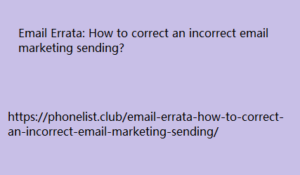Have you ever experienced a
sudden, unexplained rash or itch after using a new lotion, wearing a specific piece of jewelry, or even handling a particular plant? You might be suffering from a contact allergy. If you suspect this is the case, a contact allergen database can be your secret weapon in identifying the culprit and regaining control of your skin’s health.
What is a Contact Allergen Database?
Imagine a digital library dedicated to the enemies of your skin’s serenity. A contact allergen database is just that. It’s a comprehensive resource that compiles information on various substances known to trigger allergic reactions upon contact with the skin. These databases typically offer:
- Extensive Allergen Lists: Explore a vast catalog of allergens, often categorized by common source (e.g., metals, fragrances, cosmetics, plants).
- Detailed Allergen Information: Delve deeper into each allergen with in-depth details including its chemical name, synonyms, and the typical reactions it can cause (e.g., redness, itching, blistering).
- Diagnostic Resources: Find information on patch testing, a diagnostic tool employed by dermatologists to pinpoint specific contact allergens.
- Prevention Tips: Learn valuable strategies to avoid common allergens and manage symptoms, empowering you to take charge of your skin health.
Why Consult a Contact Allergen Database?
- Empowerment and Knowledge: Databases equip you with knowledge about potential triggers, allowing you to make informed Email Errata: How to correct an incorrect email marketing sending? choices about the products you use and the environments you navigate.
- Enhanced Communication with Healthcare Providers: Having a suspected allergen in mind can facilitate communication with your dermatologist, leading to a faster diagnosis and effective treatment plan.
- Proactive Management and Reduced Exposure: By identifying potential allergens, you can proactively avoid substances that trigger reactions. This minimizes discomfort and improves your overall well-being.
Important Considerations When Using a Contact Allergen Database
- Credibility and Source: Ensure the database you consult is from a reputable source, such as a medical association, university, or government health agency.
- Complementary Tool, Not a Diagnosis: Da s for professional medical advice. If you suspect a contact allergy, consult a dermatologist for a proper diagnosis and treatment plan.
- Individual Variations: Allergic r to person. A substance listed in a database might not necessarily trigger a reaction in you, and vice versa.
Examples of Reputable Contact Allergen Databases
- American Contact
- Complementary Tool, Not a Diagnosis: Databases are not substitutes for professional medical advice. If you suspect a Exploring Lead Generation Software contact allergy, consult a dermatologist for a proper diagnosis and treatment plan.
- Individual Variations: Allergic reactions can vary from person to person. A substance listed in a database might not necessarily trigger a reaction in you, and vice versa.
Conclusion
Contact allergen databases are valuable tools for individuals suspecting contact allergies. By providing information on potential triggers and empowering you to make informed choices, these databases can help you manage symptoms and improve your overall well-being. However, remember that these tools are meant to complement professional medical advice. If you experience concerning symptoms, always consult your dermatologist for a definitive diagnosis and personalized treatment plan. With knowledge as your weapon and a reputable contact allergen database as your guide, you can reclaim control of your skin’s health and finally say goodbye to the mystery itch.



